Complete Solutions to SECTION-B of chapter SELF ASSESSMENT PAPER 4 of Class 10 book with complete answers and questions
| Class 10 | PHYSICS |
| Chapter | SELF ASSESSMENT PAPER 4 |
| OSWAL | SECTION-B |
| Number Of Questions | 42 |
| Academic Year | 2023-24 |
Name the type of single pulley that can act as a force multiplier. Draw a labelled diagram of the above named pulley.
01:25View SolutionA person standing between two vertical cliffs and 480 m from the nearest cliff shouts. He hears the first echo after 3 s and the second echo 2 s later.
Calculate :
The speed of sound.02:56View SolutionA person standing between two vertical cliffs and 480 m from the nearest cliff shouts. He hears the first echo after 3 s and the second echo 2 s later.
Calculate :
The distance of the other cliff from the person.04:24View SolutionA monochromatic point source of light O is seen through a rectangular glass block ABCD.
Paths of two rays, in and outside the block, are shown in the figure below.
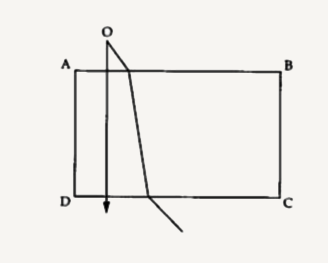
Does the source at point O appear to be nearer or farther with respect to the surface AB?02:07View SolutionA monochromatic point source of light O is seen through a rectangular glass block ABCD.
Paths of two rays, in and outside the block, are shown in the figure below.
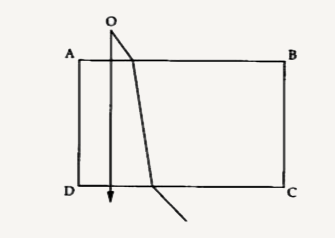
How does the shift depend on the thickness (AD or BC) of the block?01:37View SolutionA monochromatic point source of light O is seen through a rectangular glass block ABCD.
Paths of two rays, in and outside the block, are shown in the figure below.
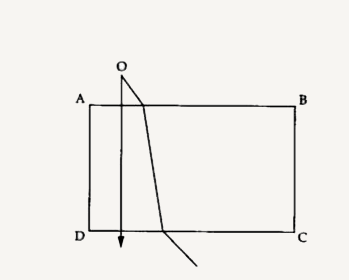
Justify your answer with the help of an appropriate ray diagram as shown in figure.03:18View SolutionA monochromatic point source of light O is seen through a rectangular glass block ABCD.
Paths of two rays, in and outside the block, are shown in the figure below.

For the same rectangular glass block, which colour from the visible spectra will produce the maximum shift?03:09View SolutionA ray of light XY passes through a right angled isosceles prism as shown below.

What is the angle through which the incident ray deviates and emerges out of the prism?02:01View SolutionA ray of light XY passes through a right angled isosceles prism as shown below.
Name the instrument where this action of prism is put into use.02:10View SolutionA ray of light XY passes through a right angled isosceles prism as shown below:

Which prism surface will behave as a mirror ?03:18View SolutionDraw a graph of potential difference (V) versus current (I) for an ohmic resistor.
01:49View SolutionHow can you find the resistance of the resistor from this graph?
01:22View SolutionWhat is a non-ohmic resistor ?
01:20View SolutionSometimes when a vehicle is driven at a particular speed, a rattling sound is heard. Explain briefly, why this happens and give the name of the phenomenon taking place?
03:10View SolutionSuggest one way by which the rattling sound could be stopped.
00:51View SolutionAn electric bulb is marked 100 W, 250 V. What information does this convey?
01:05View SolutionHow much current will the bulb draw, if connected to a 250 V supply?
01:05View SolutionDraw a labelled ray diagram to illustrate (a) critical angle (b) total internal reflection for a ray of light moving from one medium to another.
01:42View SolutionWrite a formula to express the relationship between refractive index of the denser medium with respect to rarer medium and its critical angle for that pair of media.
03:37View SolutionA battery of e.m.f. 12 V and internal resistance 2 `Omega` is connected with two resistors A and B of resistance 4 `Omega` and 6 `Omega` respectively joined in series.

Find Current in the circuit.01:24View SolutionA battery of e.m.f. 12 V and internal resistance 2 `Omega` is connected with two resistors A and B of resistance 4 `Omega` and 6 `Omega` respectively joined in series.

Find The terminat voltage of the cell .01:21View SolutionA battery of e.m.f. 12 V and internal resistance 2 `Omega` is connected with two resistors A and B of resistance 4 `Omega` and 6 `Omega` respectively joined in series.
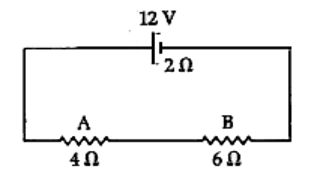
Find The potential difference across 6 `Omega` Resistor.01:58View SolutionA battery of e.m.f. 12 V and internal resistance 2 `Omega` is connected with two resistors A and B of resistance 4 `Omega` and 6 `Omega` respectively joined in series.
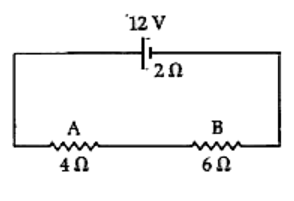
Find Electrical energy spent per minute in 4 `Omega` Resistor.01:48View SolutionName the liquid which has the highest specific heat capacity.
00:50View SolutionName two factors on which the heat absorbed or given out by a body depends.
01:19View SolutionAn equal quantity of heat is supplied to two substances A and B. The substance A shows a greater rise in temperature. What can you say about the heat capacity of A as compared to that of B?
03:27View SolutionState in brief, the meaning of each of the following:
The heat capacity of body is 50 `J^@ C^(-1)`01:03View SolutionState in brief, the meaning of each of the following:
The specific latent heat of fusion of ice is 336000 J `kg^(-1)`01:09View SolutionState in brief, the meaning of each of the following:
The specific heat capacity of copper is 0.4 `Jg^(1)""^@C^(-1)`01:13View SolutionRadioactive materials as an alternative source of energy must be wisely used. Give reasons to justify this statement.
02:23View SolutionAn engine can pump 30,000 L of water to a vertical height of 45 m in 10 min. Calculate the work done by the machine and the power. (Density of water = `10^3 kg//m^3, 1000 L - 1 m^3 , g = 9.8 ms^(-2)`)
03:43View SolutionAn object of mass 'm' is allowed to fall freely from a point A as shown in the figure.
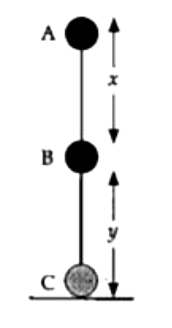
Calculate the total mechanical energy of object at:
Point A01:53View SolutionAn object of mass 'm' is allowed to fall freely from a point A as shown in the figure.

Calculate the total mechanical energy of object at:
Point B01:38View SolutionAn object of mass 'm' is allowed to fall freely from a point A as shown in the figure.
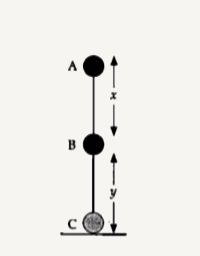
Calculate the total mechanical energy of object at:
State the law which is verified by your calculations03:14View SolutionState three characteristics of musical sound.
01:09View SolutionHow does the musical sound differ from the noise?
01:59View SolutionA nut is opened by a wrench of length 20 cm. If the least force required is 2 N, find the moment of force needed to loosen the nut.
01:40View SolutionCan the centre of mass of a body be at a point outside the body?
03:24View SolutionA nucleus `""_(11)Na^(24)` emits a beta particle to change into Magnesium (Mg).
Write the symbolic equation for the process.00:48View SolutionA nucleus `""_(11)Na^(24)` emits a `beta`-particle to change into magnesium (Mg).
What are numbers 24 and 11 called?01:01View SolutionA nucleus `""_(11)Na^(24)` emits a beta particle to change into Magnesium (Mg).
What is the general name `""_(12)^(24)Mg` with respect to `""_(11)^(24)Na` ?01:58View SolutionDefine the emf (E) of a cell and the potential difference (V) across a resistor (R) in terms of the work done in moving a unit charge. State the relation between these two works and the work it charge through a cell connected across the resistor. Take the internal resistance of the cell as r. Hence, obtain expression for the current i in the circuit.
View Solution
SECTION-B questions and complete solutions for chapter SELF ASSESSMENT PAPER 4 of SELINA PHYSICS (ENGLISH) of Class 10
